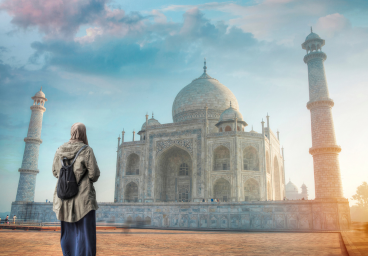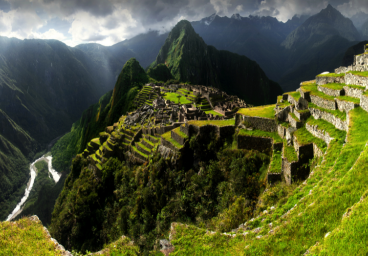In the heart of India, along the banks of the Yamuna River, the Taj Mahal stands as a testament to the enduring power of love and the pinnacle of architectural achievement. Widely regarded as one of the most beautiful buildings in the world, the Taj Mahal’s ethereal beauty and poignant history have captivated hearts for centuries.
Historical Significance
Commissioned in 1632 by the Mughal Emperor Shah Jahan as a mausoleum for his beloved wife Mumtaz Mahal, the Taj Mahal is a poignant expression of grief and enduring love. Mumtaz Mahal passed away during childbirth, and Shah Jahan, grief-stricken, vowed to create a monument that would immortalize their love.
Architectural Marvel
The Taj Mahal is a sublime blend of Persian, Ottoman, Indian, and Islamic architectural styles. The main structure is built from white marble, which changes color throughout the day, taking on subtle hues of pink, gold, and silver. The central dome, flanked by four minarets, creates a harmonious and symmetrical design that exudes grace and elegance.
Gardens and Reflecting Pool
The Taj Mahal is surrounded by meticulously manicured gardens, intersected by pathways and water channels. The Charbagh, or quadrilateral garden, is a nod to the traditional Persian garden design. The central water feature, with the Taj Mahal reflected in its still waters, adds to the ethereal beauty of the surroundings.
Intricate Inlay Work and Calligraphy
The exterior of the Taj Mahal is adorned with intricate inlay work using semi-precious stones, forming intricate patterns and Quranic inscriptions. The calligraphy, executed by skilled artisans, serves both decorative and spiritual purposes, emphasizing the Mughal commitment to the fusion of art and faith.
Sunrise and Sunset Splendor
Visiting the Taj Mahal at sunrise or sunset is a transformative experience. As the first light of dawn or the warm hues of sunset bathe the marble facade, the Taj Mahal seems to come alive, casting a mesmerizing glow. The changing colors of the sky create an ever-shifting canvas that enhances the monument’s ethereal beauty.
Symbol of Eternal Love
The Taj Mahal is a symbol of enduring love and has inspired poets, writers, and artists throughout the ages. Its unparalleled beauty and the story of Shah Jahan’s undying love for Mumtaz Mahal have elevated the monument to a symbol of eternal romance.
Preservation Efforts
The Taj Mahal faces challenges such as air pollution and the impact of large numbers of visitors. Preservation efforts, including strict regulations, periodic cleaning, and restoration projects, are implemented to safeguard this cultural treasure. Conservationists work tirelessly to maintain the pristine beauty of the monument.
Cultural and Global Significance
Designated as a UNESCO World Heritage Site, the Taj Mahal attracts millions of visitors from around the world. It is not just a national treasure but a global cultural icon that transcends borders, representing the pinnacle of human achievement in art and architecture.
Local Craftsmanship and Artistry
The city of Agra, where the Taj Mahal is located, has a rich tradition of craftsmanship and artistry. Visitors can explore local markets and workshops, witnessing the creation of intricate marble inlay work, handwoven textiles, and other traditional crafts that have been passed down through generations.
Conclusion
The Taj Mahal is more than a monument; it is a living testament to the enduring power of love, the brilliance of human creativity, and the cultural richness of India. As the sun casts its golden glow upon the marble facade, the Taj Mahal continues to stand as a timeless ode to love, inviting visitors to marvel at its beauty and contemplate the profound emotions that inspired its creation.



